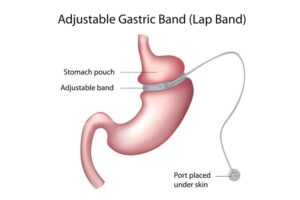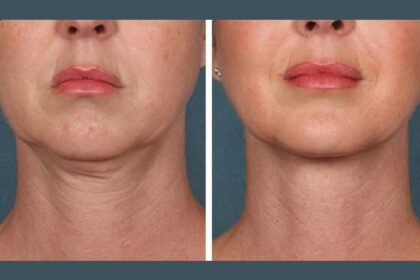Introduction
What Is Adjustable Gastric Banding?
Adjustable gastric banding involves placing a silicone band around the upper portion of the stomach to create a smaller stomach pouch. This reduces the amount of food that can be consumed at once and slows digestion, helping patients feel full faster. The procedure is performed laparoscopically, meaning it uses small incisions and specialized instruments to minimize trauma and promote faster recovery.
After placement, the band can be adjusted through a small port beneath the skin, allowing for gradual tightening or loosening to suit individual weight-loss progress and comfort.
Why Choose Minimally Invasive Banding in Abu Dhabi?
Minimally invasive gastric banding has several advantages:
-
Smaller incisions lead to less pain, faster healing, and shorter hospital stays.
-
The band’s adjustability allows for personalized control over food intake over time.
-
The procedure is reversible if necessary, offering flexibility compared to more permanent bariatric surgeries.
-
Abu Dhabi’s healthcare system provides access to experienced specialists and advanced laparoscopic techniques for safe and precise surgery.

The Gastric Banding Procedure
The process typically begins with a comprehensive consultation to assess health, body mass index, weight-loss goals, and suitability for the procedure. Pre-operative preparation includes health assessments, dietary guidance, and instructions to ensure optimal recovery.
During surgery, the patient is under general anesthesia. Small incisions are made in the abdomen to insert a laparoscope and surgical instruments. The adjustable band is positioned around the upper part of the stomach, creating a smaller pouch. The access port is secured under the skin for future adjustments.
The procedure usually takes one to two hours. Most patients are able to leave the hospital within a day or two, with a faster recovery compared to open surgery.
The Adjustment Process
One of the key benefits of gastric banding is its adjustability. After the procedure, the band’s tightness is modified by adding or removing fluid via the access port. These adjustments control the amount of food the stomach can hold, ensuring gradual, sustainable weight loss.
Regular follow-up appointments allow specialists to monitor progress and make necessary adjustments, ensuring patient comfort and effective results.
Suitable Candidates for Gastric Banding
Minimally invasive gastric banding is appropriate for individuals who:
-
Have a body mass index (BMI) above the recommended threshold for surgery.
-
Have struggled to achieve lasting weight loss through diet and exercise alone.
-
Are committed to adopting long-term lifestyle changes, including healthy eating and regular physical activity.
-
Prefer a less invasive procedure with reversible and adjustable features.
A thorough evaluation by a specialist is essential to determine suitability.
Recovery and Lifestyle After Surgery
Recovery from minimally invasive gastric banding is generally smooth. Patients usually experience less post-operative discomfort and can resume light activities shortly after the procedure.
Dietary progression is gradual, starting with liquids and soft foods before transitioning to solid meals in smaller portions. Long-term success depends on adherence to a balanced diet, regular exercise, and consistent follow-up care for band adjustments.
The procedure serves as a supportive tool to encourage healthier habits, rather than a substitute for lifestyle changes.
Emotional and Physical Benefits
Gastric banding can have a profound impact beyond physical transformation. Many patients experience increased confidence, improved mobility, and greater energy. Achieving and maintaining weight-loss goals often leads to a more active lifestyle and improved quality of life.
The adjustable nature of the band allows patients to gradually adapt to changes in food intake, supporting both emotional and physical well-being over time.
Comparison with Other Minimally Invasive Options
Compared to other bariatric procedures, gastric banding is less invasive and preserves normal digestion:
-
It does not involve removing parts of the stomach or intestines.
-
The adjustable and reversible features provide flexibility and gradual weight loss.
-
Recovery is typically faster and less intensive than more extensive procedures, though weight-loss outcomes may be slower and more gradual.
Specialists may recommend banding based on individual health, lifestyle preferences, and long-term goals.
Important Considerations
Before opting for gastric banding, patients should understand that:
-
Long-term success requires commitment to lifestyle changes.
-
Regular follow-up visits and band adjustments are essential.
-
The procedure may not be suitable for everyone, depending on health conditions or anatomical considerations.
Careful planning and adherence to medical guidance are key to achieving the best possible outcomes.
Conclusion
Minimally invasive gastric banding in Abu Dhabi provides an effective and flexible option for individuals seeking sustainable weight loss. By using laparoscopic techniques, the procedure minimizes recovery time and surgical trauma, while the adjustable band supports gradual, controlled weight loss. Combined with lifestyle changes and regular follow-up care, gastric banding can help patients achieve lasting health improvements, enhanced confidence, and a higher quality of life.





